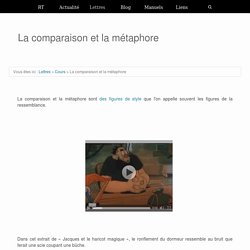

CinLEA. Gilles Fauconnier Espaces mentaux. Review by chf of The Way We Think: Conceptual Blending and the Mind’s Hidden Complexities. Victorri (Grammaires cognitives) Conceptual blending. Conceptual Blending (aka Conceptual Integration) is a general theory of cognition.[1] According to this theory, elements and vital relations from diverse scenarios are "blended" in a subconscious process known as Conceptual Blending, which is assumed to be ubiquitous to everyday thought and language.

Insights obtained from these blends constitute the products of creative thinking, though conceptual blending theory is not itself a theory of creativity, inasmuch as it does not illuminate the issue of where the inputs to a blend actually come from. Blending theory does provide a rich terminology for describing the creative products of others, but has little to say on the inspiration that serves as the starting point for each blend. The theory of Conceptual Blending was developed by Gilles Fauconnier and Mark Turner. The development of this theory began in 1993 and a representative early formulation is found in their online article Conceptual Integration and Formal Expression. The Way We Think. “With this book, Mark Turner and Gilles Fauconnier make a new and compelling argument for the importance of imagination in our conceptual lives.

Written in lucid and lively prose, this book encourages us to re-think the thoughts that occupy our everyday world, and to connect them to the most profound accomplishments of the human mind.” - Lawrence Zbikowski, author of Conceptualizing Music “Over the last two decades, cognitive linguists have mapped out the basic elements of thought -- image-schemas, frames, conceptual metaphors and metonymies, prototypes, mental spaces. Now Fauconnier and Turner have filled in the last piece of the puzzle: conceptual blending, the mental mechanism that binds together and integrates these elements into complex ideas.
The Way We Think is a dazzling tour of the complexities of human imagination. "If you seek challenging phenomena to explain or wish to be further impressed with the human mind, conceptual blends are for you. SLPcourt. Got the picture? Image, image schemata, imaginative reason. 1 This paper was presented as a plenary lecture at the GERAS conference in Dijon, March 2000. 1Eight1 weeks after the successful launch of the Euro – the common European currency – Tony Blair pledged that he would speed up the process of monetary union.

In the editor’s own words, this amounted to “prodding the British a little more quickly up the monetary aisle.” Figure 1. “Nearer to the altar” in The Economist Feb 27th – March 5th 1999 2The standard dictionary definition of a cartoon is “a humorous drawing dealing in a clever and amusing way with something of interest in the news.” 3As all readers of newspapers and magazines know, the best cartoons are those that blend visual and verbal language to expose some crucial moral, social or political truth. Cognitive semantics may have some answers. 4As a relatively new discipline in the emergent field of cognitive science, cognitive semantics studies the way we categorize, conceptualize and reason. 1.1. 2.
Figure 2. 1.2. Figure 2. 1.2.1. 1. 2. Les désarrois des "Maîtres du sens" à l'ère du numérique. Y a-t-il un niveau linguistique de représentation logique ? Gilles Fauconnier profondes; on est déplus en plus sensible aux résultats et préoccupations de disciplines voisines : sciences cognitives, philosophie du langage, intelligence artificielle, sociolinguistique.

De nouvelles conceptions et de nouvelles notions l se développent, qui, sans être encore toutes compatibles entre elles, sont manifestement plus proches du domaine étudié et plus fructueuses pour son exploration. J'ajouterai aussi que la démarche esquissée ci-dessous, fondée sur la notion de rôle et de correspondance, a été poursuivie et appliquée en détail à une gamme étendue de phénomènes (opacité, attitudes propositionnelles, spécificité, attributifs, présupposition, contre/ actuels, comparatifs, etc.) 2.
Light Shows of the Mind. Quick, what's the cube root of 487?

Now, what door would you use to get out of the room you're sitting in? If your brain were a computer, you could answer the first question almost instantaneously but you would stumble around for minutes and minutes trying to solve the second one. As technologists have programmed computers and robots, they've learned that although computers can do some mental tasks well, they cannot do others that we thought were easy but turn out to be incredibly complex. Even sophisticated computers have trouble drawing analogies between the door in one room and the doors in all the other rooms they've encountered.
Moreover, they have trouble with questions like What is this thing called a "door"? Rethinking metaphor. La métaphore dans l’hypermédia. La comparaison et la métaphore. Vous êtes ici : Lettres > Cours > La comparaison et la métaphore La comparaison et la métaphore sont des figures de style que l'on appelle souvent les figures de la ressemblance.

Dans cet extrait de « Jacques et le haricot magique », le ronflement du dormeur ressemble au bruit que ferait une scie coupant une bûche. On peut alors parler de comparaison ou de métaphore. La comparaison Une comparaison est construite selon un modèle très simple : on rapproche deux choses qui ont un point commun, c’est-à-dire une ressemblance. Cet enfant est blanc comme un cachet d’aspirine. Dans cet exemple, on compare l’enfant à un cachet d’aspirine. L’enfant est le comparé. Il est comme un cachet d’aspirine. Pour finir, on peut observer qu’une comparaison est d’autant plus belle qu’elle est inattendue : La terre est bleue comme une orange. Beau comme la rencontre fortuite sur une table de dissection d’une machine à coudre et d’un parapluie.
On metaphor and blending.